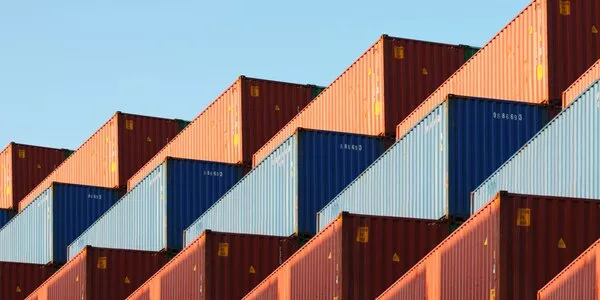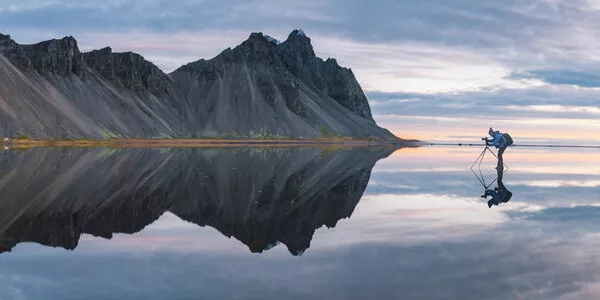
Climate Pioneers: In Conversation with Felicity Aston MBE

You first went to Antarctica when you were 23. What was that experience like and what kept pulling you back to the polar regions in years to come?
It was my first proper job and I was contracted to remain in Antarctica for just over two years. When I reflect on it now, it is a little bit shocking how little I considered the magnitude of that decision. I wasn’t able to leave Antarctica during that time and there wasn’t any easy means of communication with home. However, it just felt like the biggest adventure and I couldn’t think of a single reason to turn it down. It was the most incredible opportunity, to not only be able to see Antarctica, but to live there and call it home for a while.
I think that’s why the polar regions had an enduring fascination for me, because I saw it both on picture-book perfect days and also on the days where I would rather have been anywhere else but there. Those permanently dark and miserable days of winter when you couldn’t even see the next building.
After 2 and a half years, when I finally left, I had a strong feeling that I wanted to see more of the Polar Regions and particularly the Arctic.
It was in the far North where I first had experiences of putting together my own independent expeditions, which was terrifying but also so rewarding at the same time. The sense of achievement that I got from pulling a project like that together and leading it was addictive. A lot of people are familiar with that cycle, of having all-consuming projects that once achieved leave a huge gaping hole which can feel hard to fill.
It is a hard cycle to break, filling the hole left by one project with another, but you have to factor in time to allow that past-experience to soak in and get every last bit of meaning out of it before moving on to the next one.
With polar expeditions especially, this is so important because you are talking about such long-time scales. It is often 2-3 years of work and effort before you can get an expedition off the ground.
With COP-26 amongst us, what do you feel are your personal convictions about the cause of climate change and what do you think larger corporations can be doing to take responsibility?
When COP-26 takes place, I will be on a glacier in Iceland training with a team who will be going to ski the last degree of latitude in the North Pole in April next year. This particular expedition has been organised to collect data on arctic ocean sea ice. The reason this is so important is because this is where environmental change is incredibly rapid and yet we don’t have enough data about this part of the world, even as it disappears. And the reason why that is so important is because we rely so heavily on global computer models to understand our planet, to unpick the changes that have happened, to predict the changes that will happen and yet those computer models are only good as the data you put in. The artic is a relative data blank and so we need to gather as much information as possible before it disappears.
There will be a film screened at COP-26 by film maker Sophia Scott, which will be about an expedition we did in August, called Team Umiaq, in which a group of 6 women sailed from Iceland to Greenland. We came from all sorts of different backgrounds, sustainable finance experts, para-olympians, photographers, storytellers and scientists. It was a team with a whole range of expertise and experiences. That was one of the most interesting things about the expedition, coming together with such a diverse group of people and understanding their different perspectives. The film is all about the importance of inclusion and representation in finding climate solutions and drawing on a wide range of disciplines.
Climate change is an issue that cannot be solved by one group of people or one political affiliation or one region alone. It is a problem that affects globally and unfairly. Countries that have not majorly contributed to anthropogenic climate change are some of the worst affected and I think this points to the idea that to find solutions that stick, we need to include everyone in the conversation. We must have women in the room, people from different cultural backgrounds, religious leaders etc. It cannot be solved by exclusively white European middle-aged men in suits.
The decisions need to be made in a way that everyone can feel like stakeholders and take ownership of the challenge at hand.
I think big corporations can accelerate inclusion and representation by ensuring there is diversity in their board rooms and senior management. This might seem far removed from thinking of climate solutions, but I think it is the core of the problem. If we start to have proper representation in the political sphere, we have a whole new landscape in which we can try and battle the environmental crisis.
What do you feel is the future for the polar regions?
I can only rely on scientific data and the opinion of the people who live there and it’s a pretty gloomy picture. When I was in the front line of climate science 20 years ago, there were predictions about what our climate would look like in 20 years’ time and we are now at that point and all those predictions are stunningly accurate. We have more extreme weather events, less predictability in weather patterns and, less distinction between seasons. So, all the things that were predicted have come to pass.
This makes you think of the predictions of the next 20 years with a whole different perspective. They were right last time and will probably be right this time and what they are predicting is pretty dire. The earliest estimates for an ice-free arctic ocean are as soon as 2025.
We need a sense of urgency without a sense of doom. We need hope in order to inspire immediate action and ensure participation.
This is what the expedition to Greenland was all about, to show how each of us have the power to be part of the future. Sylvia Earle, the prominent ocean advocate, famously says “if you have to choose a time to be alive, choose now”. Because now is when we get to mold the future. We have a huge amount of power in our hands. We know the solutions, we have the answers and technology, we just need the will to put those answers into action.
This is what I hope for the future of the polar regions.
It is too late to wind back the clock. We cannot combat climate change; it has already happened however we can determine the environmental and geo-political future of the polar regions. Focusing on our current scope of influence is key. I feel hopeful and optimistic about the potential for the polar regions. I hope others feel the same and it can encourage a sense of responsibility and action.




